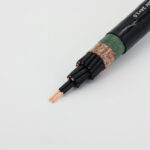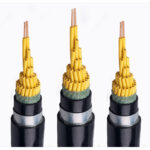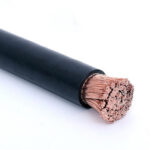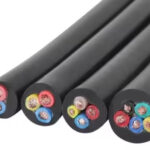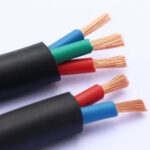Wire termination may seem like a small detail in an electrical project, but it's one of the most critical factors for safety, performance, and code compliance. Poorly terminated wires can cause overheating, loose connections, short circuits, or even fires. Whether you're a professional electrician or a DIY enthusiast, understanding essential wire termination techniques is key to a successful and durable installation.
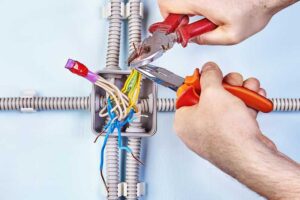
Essential Wire Termination Techniques for Every Project
In this guide, we'll cover:
What wire termination means
Common tools and accessories used in wire termination
Differences in terminating solid vs. stranded wire
Popular wire termination methods
Best practices for safe, reliable connections
FAQs and troubleshooting tips
What Is Wire Termination?
Wire termination is the process of preparing the end of an electrical wire to be securely connected to a device, terminal, connector, or another wire. Termination ensures proper electrical contact and mechanical strength.
Effective termination must:
Provide secure mechanical contact
Ensure low resistance for electrical continuity
Be safe and durable, even in high-vibration or outdoor environments
Comply with local codes (e.g., NEC in the US)
Key Tools and Accessories for Wire Termination
Before you start, make sure you have the right tools and accessories:
| Tool/Item | Purpose |
|---|---|
| Wire Strippers | To remove insulation without damaging the conductor |
| Crimping Tool | To secure terminals or ferrules to wire ends |
| Ferrules | Prevent fraying in stranded wire (especially in screw terminals) |
| Screwdrivers | For tightening terminals or connectors |
| Soldering Iron | Optional for tinning or permanent connections |
| Heat Shrink Tubing | For insulation and strain relief |
| Multimeter | To test connectivity after termination |
Termination: Solid Wire vs. Stranded Wire
Solid and stranded wires behave differently, especially during stripping and connecting:
Solid Wire Termination
✅ Pros:
Easy to insert into push-in connectors and screw terminals
Holds shape and position well
Less likely to fray
⚠️ Watch out for:
Brittleness if bent repeatedly
Damage from over-tightening screws
Common Uses: In-wall residential wiring, grounding wires, breadboard circuits
Stranded Wire Termination
✅ Pros:
Flexible, perfect for applications with movement or vibration
Durable when terminated correctly
⚠️ Challenges:
Prone to fraying if not bundled correctly
Needs proper support like ferrules or crimp terminals
Common Uses: Appliance cords, automotive wiring, audio cables, robotics
5 Common Wire Termination Techniques
1. Screw Terminal Connections
Best for: Residential outlets, switches, breaker panels
How it works:
Strip insulation
Loop the wire clockwise around the screw
Tighten screw securely
Tips:
Use solid wire or ferruled stranded wire
Avoid over-tightening, which can damage the wire
2. Crimp Terminals
Best for: Automotive, industrial, and appliance wiring
Types: Ring terminals, spade terminals, butt connectors, quick-disconnects
How it works:
Strip wire
Insert into crimp terminal
Use a crimping tool to secure the metal sleeve
Pros:
Fast, reliable, and vibration-resistant
No soldering required
Important: Always use the correct size terminal for the wire gauge
3. Wire Ferrules
Best for: Stranded wire going into screw terminals
How it works:
Insert stripped stranded wire into the ferrule
Crimp the ferrule with a proper tool
Insert the ferrule into the terminal
Benefits:
Prevents fraying
Increases reliability of screw connections
NEC-compliant in many jurisdictions
4. Twist-On Wire Connectors (Wire Nuts)
Best for: Home wiring (e.g., connecting multiple wires in a junction box)
How it works:
Strip wires
Align and twist together
Secure with a wire nut
Notes:
Choose the correct size for the number and size of wires
For stranded wires, twist before inserting into the nut
5. Soldered Connections
Best for: Low-voltage electronics, permanent connections
How it works:
Strip wires
Twist wires or insert into connector
Heat and apply solder until it flows smoothly
Use heat shrink tubing to insulate
Caution:
Not ideal for high-vibration environments unless strain-relieved
May not be code-compliant in some residential applications
Best Practices for Wire Termination
✅ Strip carefully: Don’t nick the conductor
✅ Use ferrules for stranded wire in screw terminals
✅ Match connectors to wire gauge
✅ Tug test all connections after termination
✅ Use insulated tools and follow lockout/tagout (LOTO) procedures when working on energized circuits
✅ Label wires in complex systems for clarity
Common Mistakes to Avoid
❌ Twisting stranded wire into a screw terminal without a ferrule (can cause fraying or poor contact)
❌ Using the wrong crimping tool (results in weak connections)
❌ Over-tightening screws (can break solid wire)
❌ Mixing wire sizes in one connector without proper sizing
❌ Using solder as the only mechanical connection in high-vibration setups
FAQ: Wire Termination
Q1: Do I need ferrules for stranded wire?
A: Yes, especially in screw terminals. Ferrules prevent fraying and ensure consistent contact.
Q2: Can I use wire nuts with stranded wire?
A: Yes, but twist the strands together tightly before applying the wire nut for best results.
Q3: Is soldering better than crimping?
A: Not necessarily. Crimping is faster, reliable, and often preferred in industrial and automotive work. Soldering can be ideal for permanent, low-vibration connections.
Q4: What’s the best termination for outdoor or wet environments?
A: Use waterproof crimp connectors or terminals rated for outdoor use, plus heat shrink or sealed enclosures.
Conclusion
Wire termination isn't just about making connections — it's about making the right connections that last. By using the proper techniques, tools, and accessories for your specific wire type and application, you'll ensure safety, reliability, and long-term performance.
Bonus: Recommended Products
(If you sell tools or wire products, you can insert affiliate links or product CTAs here.)
✅ Ferrule kits for stranded wire
✅ Crimping tools and wire terminals
✅ Heat shrink tubing kits
✅ Quality wire strippers
Related Articles
Link to your pillar content for internal SEO:

